Feeding your dog the right diet at each stage of life is pivotal to ensuring their health and happiness. Dogs’ nutritional needs change as they grow, so understanding what and how much to feed them at different ages can be a game-changer. This comprehensive guide offers actionable dog feeding tips by age, helping you make the best choices for your furry friend.
Table of Contents
- Introduction to Dog Feeding Tips by Age
- Nutritional Needs for Puppies (Birth to 12 Months)
- Feeding Young Adult Dogs (1 to 5 Years)
- Nutrition for Middle-Aged Dogs (6 to 9 Years)
- Senior Dog Feeding Guidelines (10+ Years)
- Table of Feeding Ideas by Age Group
- Frequently Asked Questions
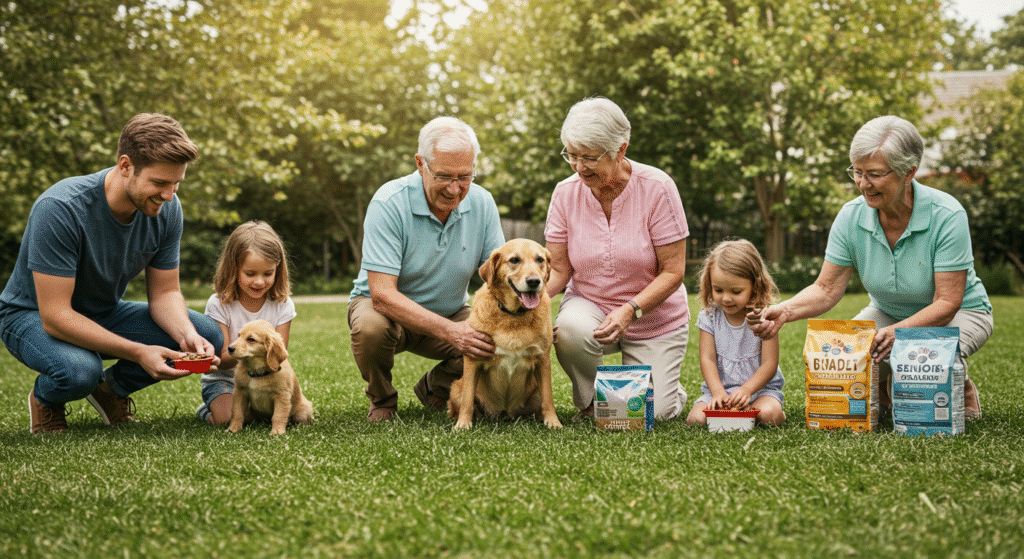
Introduction to Dog Feeding Tips by Age
Feeding your dog is not a one-size-fits-all process. Their nutritional needs vary significantly depending on their life stage—puppies require an energy-dense diet, while seniors might need lower calorie meals to prevent obesity.
These dog feeding tips by age will walk you through what makes a diet appropriate for different life stages.
As a pet parent, decisions about your dog’s diet should focus on growth, maintenance, and age-specific health concerns.
For instance, a high-protein diet helps puppies build strength, while fiber-rich and easily digestible meals benefit seniors.
By tailoring a dog’s diet to their age and activity level, you help them lead a healthier and longer life.
Understanding why age matters is critical. Puppies exert high energy, middle-aged dogs need balance for weight maintenance, and seniors have slower metabolisms.
With proper feeding tips, you can give the right fuel at the right time, ensuring that your dog reaches their potential at each stage of life.
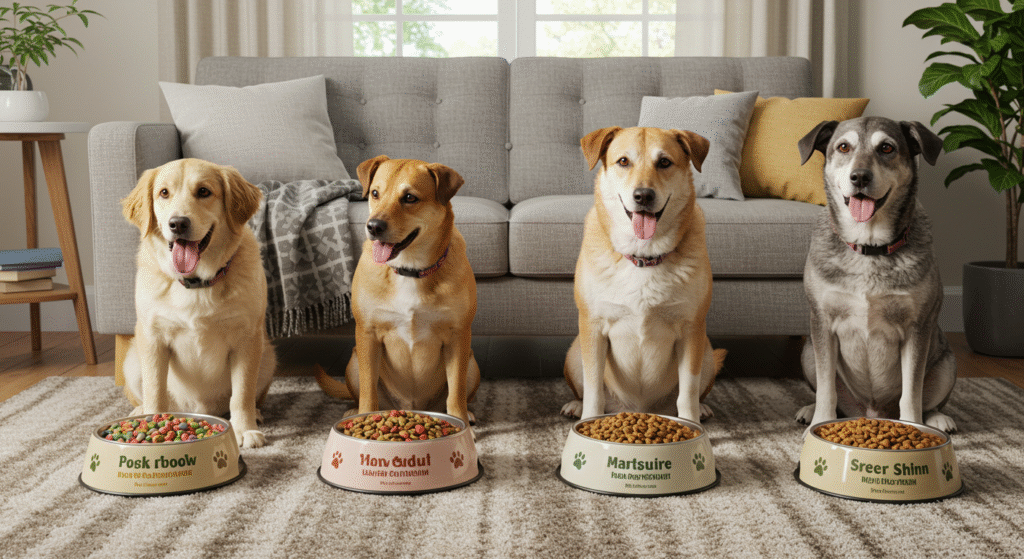
Understanding Your Dog’s Nutritional Needs Across Life Stages
Feeding your dog isn’t just about filling the bowl—it’s about giving them the right nutrition for their specific age, size, and lifestyle. Just as humans need different nutrients at different life stages, dogs also require age-appropriate diets to thrive.
Whether you’re raising a bouncy puppy, caring for a healthy adult, or looking after a slow-moving senior, the right diet can mean the difference between a vibrant, active life and one plagued with preventable health issues.
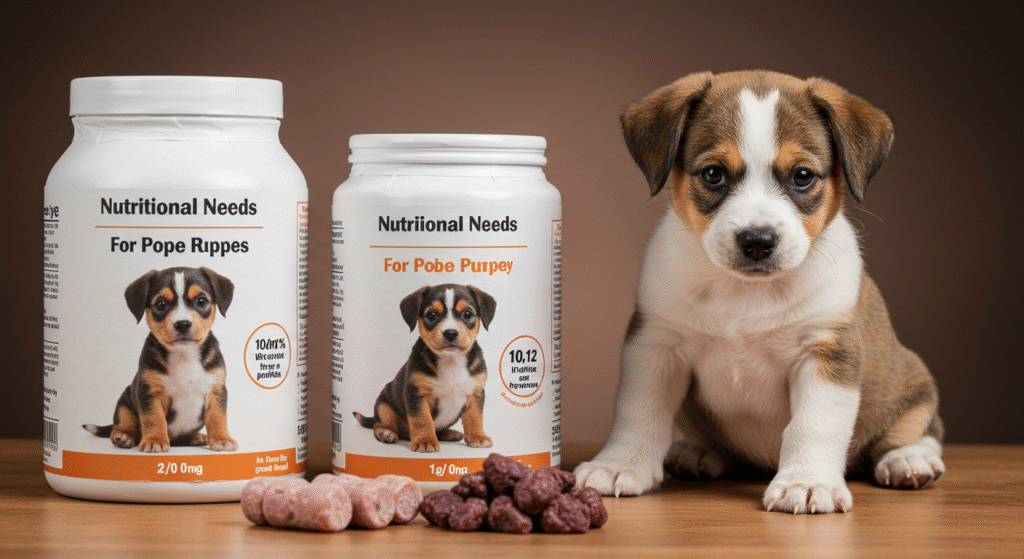
Nutritional Needs for Puppies (Birth to 12 Months)
Puppies grow rapidly during their first year, and their diet must support their physical and cognitive development. Here are ten essential dog feeding tips by age for this stage:
- Select puppy-specific food, as it’s fortified with higher protein, fat, and calories needed for growth.
- Establish a feeding schedule puppies require 3-4 meals per day to stabilize blood sugar levels.
- Focus on DHA-enriched foods to support brain and retina development.
- Avoid overfeeding to prevent obesity, even at this young stage.
- Gradually switch from mother’s milk to soft solids around 4 weeks old.
- Always serve food at room temperature to avoid stomach upset in delicate digestive systems.
- Choose kibble formulated specifically for puppies of their breed size.
- Consult a veterinarian about introducing supplements, like calcium or vitamins.
- Provide fresh water at all times to keep them hydrated.
- Adjust food portions as they grow monitor their weight to ensure they have healthy growth curves.
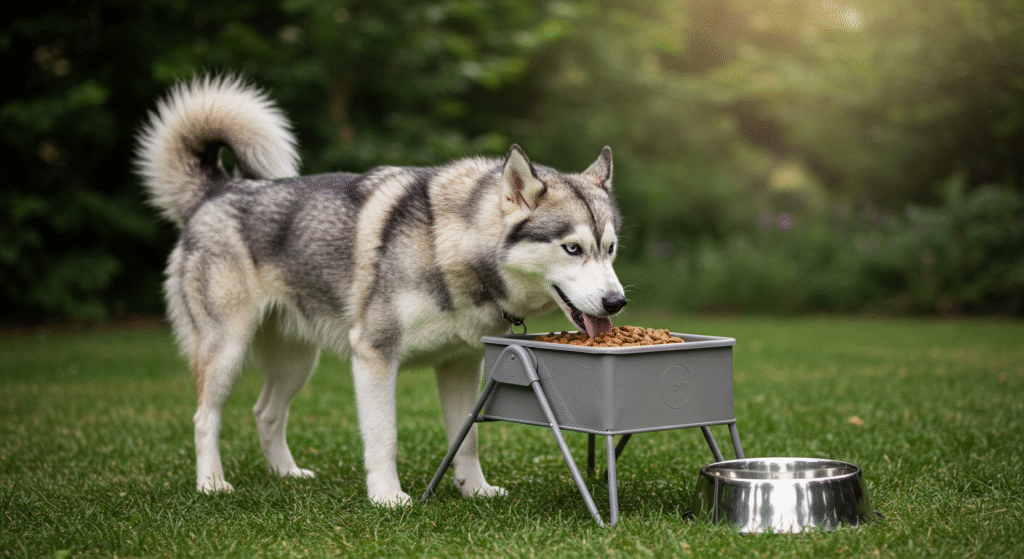
Feeding Young Adult Dogs (1 to 5 Years)
Once your dog reaches adulthood, maintaining optimal weight and meeting their energy demands becomes the priority. Use these dog feeding tips by age to provide a balanced diet for young adult dogs:
- Replace puppy food with adult dog food around 12 months for most breeds.
- Feed your dog twice daily at consistent intervals.
- Opt for high-quality kibble featuring protein as the first ingredient.
- Avoid human foods like chocolate, grapes, and onions, which are toxic to dogs.
- Incorporate Omega-3 fatty acids to maintain skin and coat health.
- Use portion control to prevent weight gain; adhere to feeding guidelines on food labels.
- Transition to grain-free options if your dog shows sensitivity to grains.
- Provide activity-appropriate diets for more energetic breeds or working dogs.
- Rotate flavors occasionally to keep meals exciting without upsetting their stomach.
- Always monitor for any new allergies or sensitivities in their diet.
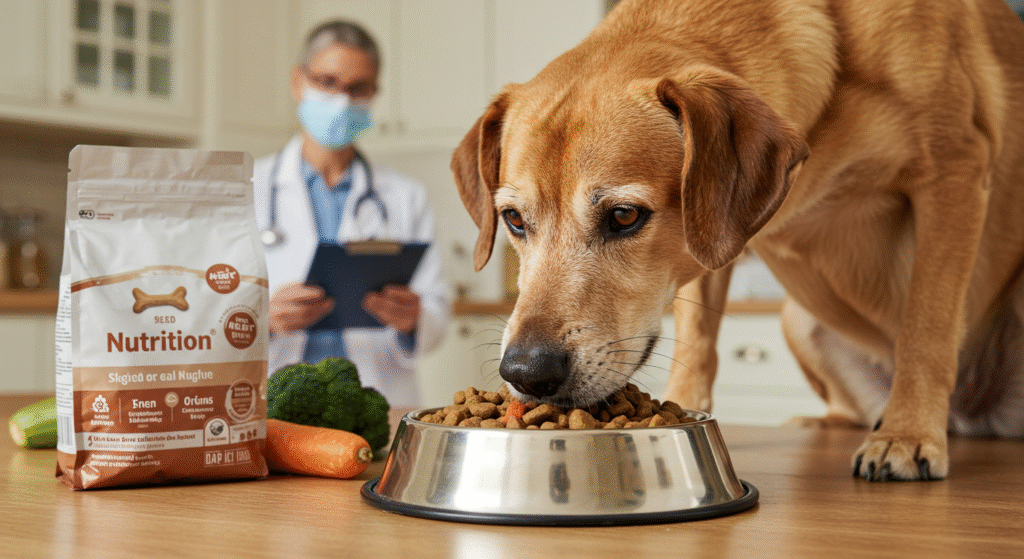
Nutrition for Middle-Aged Dogs (6 to 9 Years)
Middle-aged dogs may begin to show subtle signs of aging, like reduced energy or slower metabolisms. Adjusting their diet is crucial to managing these changes. Follow these dog feeding tips by age for middle-aged dogs:
- Begin to look for formulas that support joint health, including glucosamine and chondroitin.
- Shift slightly to lower-calorie meals if your dog becomes less active.
- Minimize treats and strictly feed them within recommended caloric limits.
- Choose foods with high fiber content to aid digestion and promote bowel health.
- Regularly weigh your dog and adjust portions to maintain a healthy weight.
- Ensure protein intake remains sufficient to maintain muscle mass as they grow older.
- Offer softer kibble or wet food if dental health starts to decline.
- Introduce antioxidants to fight free radical damage associated with aging.
- Make sure fats are moderate to sustain energy while avoiding unnecessary calorie overload.
- Continue hydration with fresh, clean water and consider adding wet food for moisture.

Senior Dog Feeding Guidelines (10+ Years)
Senior dogs (10 years and older, though this varies by breed) face unique challenges, from decreased mobility to slower digestion. These dog feeding tips by age focus on ensuring comfort and health in their golden years:
- Prioritize a senior dog food diet to suit slower metabolisms and aging requirements.
- Reduce calories further if your dog becomes less active to avoid excess weight.
- Select foods labeled “joint support” to prevent or manage arthritis and joint pain.
- Provide easily digestible proteins to maintain muscle without overworking aging organs.
- Supplement meals with fatty acids like Omega-3 to support joint mobility and coat health.
- Offer smaller, frequent meals to aid digestion and nutrient absorption.
- Add natural sources of fiber, such as sweet potatoes or pumpkin, for smoother bowel movements.
- Cut food into smaller pieces or serve moist options for easier chewing.
- Avoid high-sodium or high-fat diets—these can strain aging kidneys and the heart.
- Regularly recheck dietary needs with your vet as aging progresses.
Table of Feeding Ideas by Age Group
| Dog Age Group | Feeding Frequency | Nutritional Focus | Recommended Diet Example |
|——————-|—————————|———————————–|————————————|
| Puppies (0-12 mo) | 3-4 meals daily | High calories, DHA, Calcium | Puppy kibble, soft food, goat milk additive |
| Young Adults | 2 meals daily | High Protein, Moderate Fat | High-quality kibble, occasional raw meats |
| Middle-Aged Dogs | 2 meals daily | Fiber, Moderate Calories | Balanced kibble with antioxidants |
| Seniors (10+ yrs) | 2-3 smaller meals daily | Lower Fat, Joint Supplements | Senior wet food, soft proteins like chicken |
Frequently Asked Questions
1. What should I feed my dog at different ages?
Tailor the diet to the stage of life. Puppies need energy-dense meals, while seniors require low-fat, easily digestible options.
2. Can puppies eat adult dog food?
No, puppy food is higher in calories and nutrients essential for their development.
3. How often should I feed my dog?
Puppies need meals 3-4 times daily. Adults and seniors can stick to 2 meals but adjust for health needs.
4. What are the best foods for senior dogs?
Look for foods labeled for seniors with joint support and easy digestibility.
5. Should I use supplements for my dog?
Consult your vet, but some dogs may benefit from fish oil, joint supplements, or probiotics.
6. Can dogs eat the same food their whole life?
No, changing nutritional needs by age require adjustments to diet over time.
7. How can I tell if I’m overfeeding my dog?
Signs include weight gain and difficulty moving. Follow food package guidelines and monitor portions.
8. What should I do if my dog refuses to eat?
Check for illness, offer variety, or consult a vet if the issue persists.
9. Are raw diets safe for dogs?
A properly balanced raw diet can be beneficial; consult a vet for guidance.
10. Can dogs drink milk?
While not toxic, some dogs are lactose intolerant. Choose alternatives like goat milk instead.
By following these dog feeding tips by age, your pup will enjoy optimal
